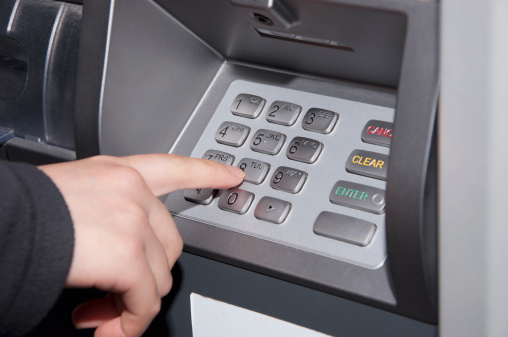Banking, finance, and taxes
Average Bank ATM Fee Rises to New High of $4.35
Published:
Last Updated:

Over the past five years the fee for using an out-of-network ATM has risen 23% according to Bankrate.com. And if that’s not enough, checking account overdraft fees are at a record high for the 16th consecutive year at $32.74 per bounced check, and just 38% of non-interest bearing checking accounts are now free, down from 75% from five years ago.
The five cities with the highest combined ATM fees are Phoenix ($4.96), Denver ($4.75), San Diego ($4.70), Houston ($4.67) and Milwaukee ($4.66). ATM fees are lowest in Cincinnati ($3.75), San Francisco ($3.93), Pittsburgh ($4.03), St. Louis ($4.12) and Los Angeles ($4.13).
ALSO READ: Walmart Moves Into Checking Account Business
The five cities with the highest average overdraft fees are Philadelphia ($34.80), Milwaukee ($34.47), Phoenix ($34.45), Boston ($34.37) and Denver ($34.20). The five cities with the lowest average overdraft fees are San Francisco ($26.74), Los Angeles ($29.47), San Diego ($30.22), Cincinnati ($30.44) and Dallas ($31.33).
Like the airlines, which have discovered they can charge passengers for everything from a blanket to more leg room, banks are raising ATM fees “because it’s really low-hanging fruit as far as fee income is concerned,” said Bankrate.com’s chief financial analyst, Greg McBride.
For consumers who choose to have an interest-bearing checking account, the average account balance required to avoid having to pay an average monthly fee of nearly $15 rose 7% to $6,211. Why anyone would keep that much cash in an account that pays 0.4% interest is something of a mystery. As McBride notes, “If you’ve got to strand a large amount of money in a (low-yield account) just to avoid a fee, it’s time to make a change.”
Even though the fees are rising, banks are realizing less revenue from ATM, overdraft and other fees. FDIC data indicate that banks collected $41.9 billion in fees in 2009, compared with $32.5 billion in 2013. Consumers are using out-of-network ATMs less and are taking advantage of a change in federal law that prohibits banks from charging for overdraft protection unless a customer specifically chooses to pay for the coverage.
McBride does not expect to see any dramatic future increases in the fees to offset lost revenue: “The sharp decline in free checking and the run-up in fees as the result of regulatory changes has run its course.” In other words, banks no longer think they can justify the loss of customer goodwill with the potential revenue increases from higher fees.
ALSO READ: Rates Are Going Higher, but Will These 5 Top Banks Really Benefit?
Ever wanted an extra set of eyes on an investment you’re considering? Now you can speak with up to 3 financial experts in your area for FREE. By simply
clicking here you can begin to match with financial professionals who can help guide you through the financial decisions you’re making. And the best part? The first conversation with them is free.
Click here to match with up to 3 financial pros who would be excited to help you make financial decisions.
Thank you for reading! Have some feedback for us?
Contact the 24/7 Wall St. editorial team.